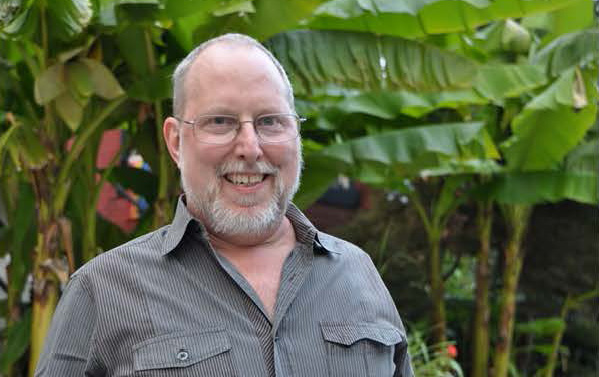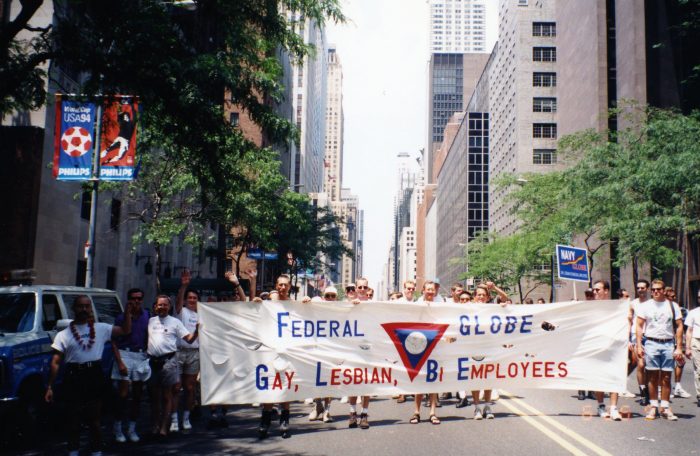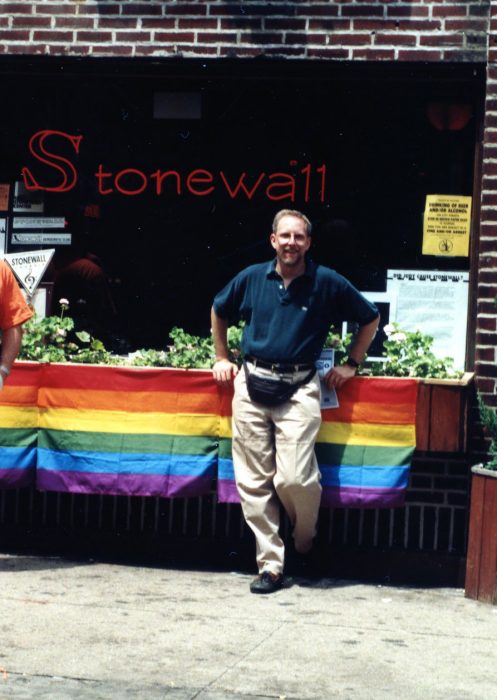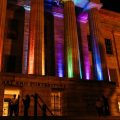Hirsch Endowment Supports LGBTQ Initiatives
A brilliant man leaves a lasting legacy
A gift to the Smithsonian Institution in honor of the late Leonard P. Hirsch, scientist and senior policy advisor at the Smithsonian for 26 years, aims to lift up the stories, lives and history of LGBTQ people across America and around the world.

Leonard P. Hirsch (Photo by Matthew Key for the Washington Blade)
Funds from the Dr. Leonard Hirsch Endowment—a gift from the estate of his late father, Michael Hirsch—will underwrite Institution-wide programming focusing on people who are different because of sexual orientation or gender identity.
In the course of his tenure at the Smithsonian, Len Hirsch was as well known for his role as a gay activist as he was for the intellectual rigor he brought to his work around global environmental issues.
Born and raised in Queens, N.Y., Hirsch had last served as senior policy advisor in the Office of International Relations and the Office of the Under Secretary for Science from 1988 to 2014, before his death from cancer on June 12, 2015.
By all accounts he was a gifted scientist, a relentless agitator, and a loyal colleague, famous for his bow ties and dry wit.
“Len was a brilliant strategist in terms of gay rights in the federal government and specifically at the Smithsonian,” says Katherine Ott, a curator at the National Museum of American History, who counted Len as a friend and a colleague for 15 years. “I knew him through what used to be called GLOBE (Gay, Lesbian, Bisexual and Transgender Employees of the Federal Government),” a group now known as Pride Alliance.

GLOBE leading the way at the 1994 New York City Pride Parade. (Hirsch family photo)
“One of the reasons many of us revere him is he got GLOBE going,” says Ott. With chapters ultimately launched at more than a dozen federal agencies, “GLOBE was his baby. He was a thorn in the side of the administration around queer stuff. And he was especially good at reminding others that there are queer people at SI.”
“He was intimidatingly smart, just an intellectual through and through,” Ott adds. “He was also really deeply kind and compassionate, especially around social justice issues.”
“Len was very proud of what he did at the Smithsonian,” says his cousin David Gordon, who served as the executor of the estate of Michael Hirsch—Len’s father and David’s uncle.
While the elder Hirsch had indicated in his will that he wanted a portion of his estate to go to charity, he left it to Gordon to allocate the funds as he saw fit. Even as Gordon made gifts to organizations bringing kosher meals, Braille texts and other items to those in need in the Jewish community, he mulled over how to use some of the money to elevate Len’s memory and build upon his work giving a voice to LGBTQ staff across the government.
“I felt it was important for him to have a legacy,” Gordon recalls, describing his cousin as “funny and brilliant.”
“I think that Len’s father would be honored and proud” that a portion of his estate would be earmarked for the Smithsonian, he continues. “And I thought, if there is not an LGBTQ programming component at the SI, then there should be. It’s needed, it’s overdue and it’s important.”

Kristian Fauchald with Leonard Hirsch in Cambodia in 2005. (Hirsch family photo)
The precedent for making an endowment was established by Hirsch himself. In 2015, Hirsch was predeceased (by three months) by his husband and partner of 32 years, Dr. Kristian Fauchald, curator emeritus in the Museum of Natural History’s department of invertebrate zoology. The couple were well known for their legendary dinner parties and a shared passion for travel. After Fauchald’s death, Hirsch made a gift in Fauchald’s honor to advance research in the area of polychaete worms. Fauchald was mentor and friend to hundreds in the polychaete community─he and Hirsch provided hospitality for many students and other researchers visiting the Smithsonian.
Not only did Hirsch build grassroots networks for LGBTQ staff within and beyond the Institution, but he excelled at connecting people and organizations to explore larger questions of science and culture.
“He had his hands in a whole lot of topics,” says Scott Miller, Deputy Undersecretary for Collections and Interdisciplinary support, who, like Ott, worked with Hirsch for a decade and a half.
Miller realized from the day Hirsch introduced himself that “he was eager to welcome new colleagues to the SI and get them engaged in the broader picture.”
“There are some topics that the SI works on broadly, where multiple units are involved, like providing basic information about biodiversity and how to best convey it,” Miller says. “You really need a pan-Institutional perspective, and Len represented that here. He spent a lot of effort, in today’s words, ‘convening people,’ bringing people inside and outside the Smithsonian together to explore ways to advance global objectives.”
“Len was a remarkable man and a dear friend,” says Anna Weitzman, who retired in February from the Natural History Museum. He was “wonderful, brilliant, driven and, at times, difficult. His work on international biodiversity initiatives, such as the Convention on Biological Diversity and the Global Biodiversity Information Facility, should be at the top of the things he is remembered for, along with founding GLOBE.”
“Len wanted nothing more than to make the world better, and he worked to do so until his dying breath,” Weitzman adds.
In a pleasing coincidence, the date the endowment was established was August 28, 2019—the date Len Hirsch would have turned 64.

Len Hirsch poses in front of New York’s famed Stonewall Inn in 1994. (Family photo_
To the end of his life, Hirsch always wore his sexual orientation proudly, showing what was possible to others who might have been more reticent to be out at work.
“Len was never ‘in,” Ott recalls. “I can’t imagine he was ever quiet about being who he was. He was fearless that way.”
If you would like to learn more about leaving a legacy to the Smithsonian, please visit legacy.si.edu. If you would like to make a contribution to the Dr. Leonard Hirsch Endowment, just write :Leonard Hirsch Endowmentin the memo section of your check to the Smithsonian Institution.
Posted: 11 May 2020
-
Categories:
Collaboration , Education, Access & Outreach , Feature Stories , Natural History Museum , Science and Nature







